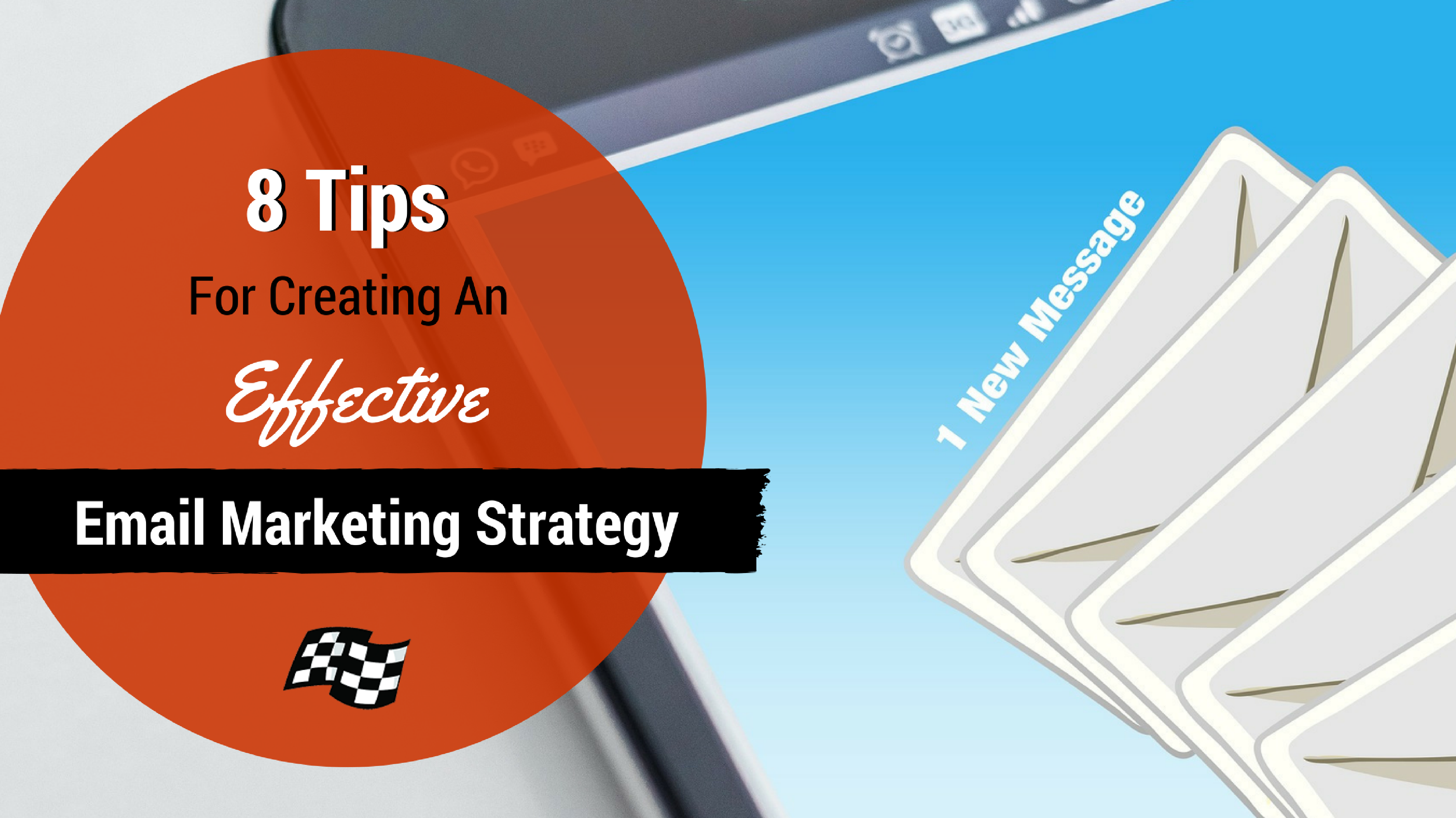
When leveraged properly, email marketing can provide ample exposure and leads for any type of business. However, in many cases, you only have one shot. If contacts are turned off by your initial pitch, they are likely to ignore future contact. As a result, preparing a forward-thinking and effective email marketing strategy prior to sending is critical.
The eight tips below cover what you need to consider as you develop and deploy your email marketing strategy.
1. Target Prudently

Decades ago, before digital analytics were readily available, marketing firms had little choice but to pursue an all-encompassing approach. While it was possible to appeal to certain tastes, like a kitchen appliance company advertising in a cooking magazine, content platforms were fairly universal. It was more difficult to know who you’re reaching.
Today, social media, newsletters, and website analytics provide a great way to collect the addresses email and other information of users who already care about your product or service. Anyone who willingly provides their email address is presumably interested in follow-ups and updates. On social media, you can use the platforms to link to a page for newsletter sign-ups.
Beyond voluntary newsletter sign-ups, you can use analytical data garnered from your site to gain a good picture of the most interested demographics. Google Analytics is free to use and provides everything from user demographics such as age and gender to location and interests, where you can view affinity categories and in-market segments to gauge if you can tie points of interest into your marketing campaigns.
2. Use Incentives
Users who follow you understand the content they receive will largely be self-promotional, though they also need a reason to stay interested. This is where incentives come in. One common incentive that works well is to offer sales to people who have bought from you before. You may also want to try providing incentives for completing surveys that can further your analytical understanding of your audience.
3. Set up Cart Abandonment Notifications
If you run a website where users can add things to a cart, it’s prudent to set up automated emails whenever they fill their cart but leave it untouched for a period of time. Many email platforms, like MailChimp, offer this as part of their service if you use Shopify, Magento, or WooCommerce as your store platform. Since research shows 67% of online shopping carts are abandoned, this highly lucrative follow-up approach can be a very effective component of any email marketing campaign.
4. Cherish the Seasons

A common link between most of your email recipients is acknowledgement of seasons and holidays. Whether it’s a sale for Valentine’s Day or an item suggestion for the coming warm or cold months, it’s a good idea to use holidays and seasons to your advantage. Around holidays, focus on a relevant marketing campaign about a week or so prior. For an incoming season, like summer, start showcasing relevant products just as the warm weather starts to hit.
5. Personalize Emails
Most internet users are savvy enough at this point to know a mass send-out when they see one. Starting off an email like “Hello Customer!” or without their name at all gives off a very dismissive, impersonal vibe that may result in that email heading to the trash can.
Instead, use spreadsheets and mail merging applications to personalize the heading in your email. You can use spreadsheets to log an email address, name, location, etc., using it to start emails off like “Hi [Name]! Hope all is great in [Location]!” Better yet, most email marketing services can automate this for you. Doing this should result in significantly higher engagement rate.
6. Segment “Amount Spent”
A good email marketing campaign also values just how active the recipient is on your website. Kissmetrics Analytics let you view how much each individual user has spent throughout your site’s lifetime. Using this data, you can segment properly by dividing users into several categories.
The top echelon of shoppers, those who buy frequently and significantly, can be offered exclusive discounts and invites to show your appreciation. Meanwhile, you can also see brand-loyalty customers, who generally stick to one brand. Here you can provide brand-specific discounts or recommendations for similar products.
Regardless of how you segment these users, dividing them by overall activity on your site can make for a highly targeted and relevant email marketing campaign with incentives that seem personally tailored to them.
7. Make the Email Read Like a Real Person

There’s a fine line between using someone’s name and location and repeating that data incessantly, so it appears like a robot. Aim to make your email read as naturally and genuine as possible, while also thanking the person for their subscription and service. Also, put an actual name to your company, whether it’s the CEO or head of marketing. People like to receive email from other real people, not a company as a whole.
8. Subscribe to Your Competition
To get a feel for what your competitors are saying and offering, it’s a good idea to subscribe to their email newsletters. Never copy them directly, but their work can provide inspiration for your own newsletters. Especially since they are engaging an overlapping audience, it could also be a good idea to one-up their discounts, by providing a 25% off coupon on the same day they provide a 20% off coupon.
These eight tips provide a thorough and effective strategy for running a successful email marketing campaign that connects to relevant users with a personable, informative, and incentivizing approach.
